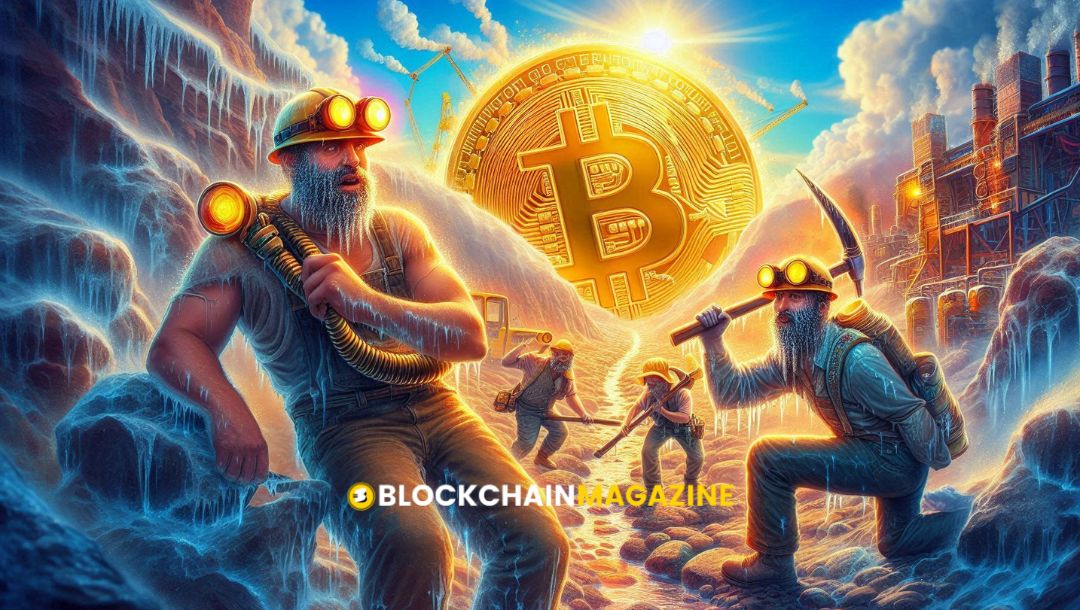The relentless escalation of Bitcoin hashrate, a measure of the network’s computational vigor, may finally decelerate, offering miners some respite as severe summer heatwaves compel operational curtailments.
Miners have already seen their profit margins diminish in an overcrowded sector, exacerbated by the halving that slashed their mining rewards by 50%, while the hashrate continued to reach unprecedented heights. The surge in hashrate is primarily driven by the deployment of previously acquired mining rigs and the frantic efforts by miners to upgrade their equipment with more efficient machines to maintain profitability post-halving. For instance, on May 25, the hashrate soared to an unprecedented 658 exahash per second (EH/s), according to Luxor’s Hashrate Index data.
Read more: Insights on Bitcoin Halving and the Future of Crypto by Arthur Hayes
However, this relentless ascent is expected to slow in the coming months as North America faces the summer season with its attendant heatwaves. Miners operate extremely powerful machines that emit substantial heat during their computational processes. “The primary operational challenge for Bitcoin miners is heat mitigation,” remarked analysts at Blockware Intelligence. “ASICs, the robust computers employed for mining, can attain very high temperatures without adequate cooling measures.”
Addressing this heat becomes even more challenging during the summer, as companies require more power to cool their machines and/or must shut down operations due to the high demand from energy consumers running air conditioning. “Many miners have to curtail operations during the summer months, partly due to overheating and partly due to residential energy consumption reaching levels that trigger demand response clauses in miners’ power purchase agreements,” Blockware added.
Read more: The Shrinking Bitcoin Reward: How Will Miners Adapt to a Finite Supply Landscape?
This seasonal phenomenon has led to a reduced hashrate over the past two summers, and the lower hashrate signifies a decline in the difficulty of mining a Bitcoin block. “As we enter the summer months in the United States, we’re keen to observe whether the hot weather will force miners to curtail operations and thereby suppress hashrate growth, as witnessed in 2022 and 2023,” stated Colin Harper, head of content and research at Luxor Hashrate Index, in a report dated June 17.
Indeed, the hashrate has already begun to decline since reaching its peak in March. As of June 17, it had decreased by 10% to 589 EH/s, according to Hashrate Index data. Given that a significant portion of miners is based in the U.S., particularly in sweltering Texas, the suspension of operations by North American companies is likely to impact hashrate growth. “According to data from the University of Cambridge, approximately 37% of all Bitcoin mining occurs in the United States,” noted Blockware. “As summer continues to intensify, it is reasonable to anticipate heat-induced curtailments for U.S.-based miners.”
The reduced hashrate and difficulty could benefit some miners as competition diminishes over the summer. Additionally, certain miners, such as Riot Platforms (RIOT), can earn extra income from the power grid by curtailing their operations as part of their power purchase contracts.

 Bitcoin
Bitcoin  Ethereum
Ethereum  XRP
XRP  Tether
Tether  Solana
Solana  Dogecoin
Dogecoin  USDC
USDC  Cardano
Cardano  Lido Staked Ether
Lido Staked Ether  TRON
TRON  Chainlink
Chainlink  Avalanche
Avalanche  Sui
Sui  Wrapped stETH
Wrapped stETH  Wrapped Bitcoin
Wrapped Bitcoin  Stellar
Stellar  Toncoin
Toncoin  Hedera
Hedera  Shiba Inu
Shiba Inu  Polkadot
Polkadot  WETH
WETH  LEO Token
LEO Token  Bitcoin Cash
Bitcoin Cash  Litecoin
Litecoin  Hyperliquid
Hyperliquid  Bitget Token
Bitget Token  Official Trump
Official Trump  Uniswap
Uniswap  Pepe
Pepe  Wrapped eETH
Wrapped eETH  USDS
USDS  NEAR Protocol
NEAR Protocol  Ethena USDe
Ethena USDe  Aave
Aave  Aptos
Aptos  Internet Computer
Internet Computer  Ondo
Ondo  WhiteBIT Coin
WhiteBIT Coin  Cronos
Cronos  Ethereum Classic
Ethereum Classic  Monero
Monero  Mantle
Mantle  POL (ex-MATIC)
POL (ex-MATIC)  Render
Render  Dai
Dai  Algorand
Algorand  MANTRA
MANTRA  Bittensor
Bittensor 



